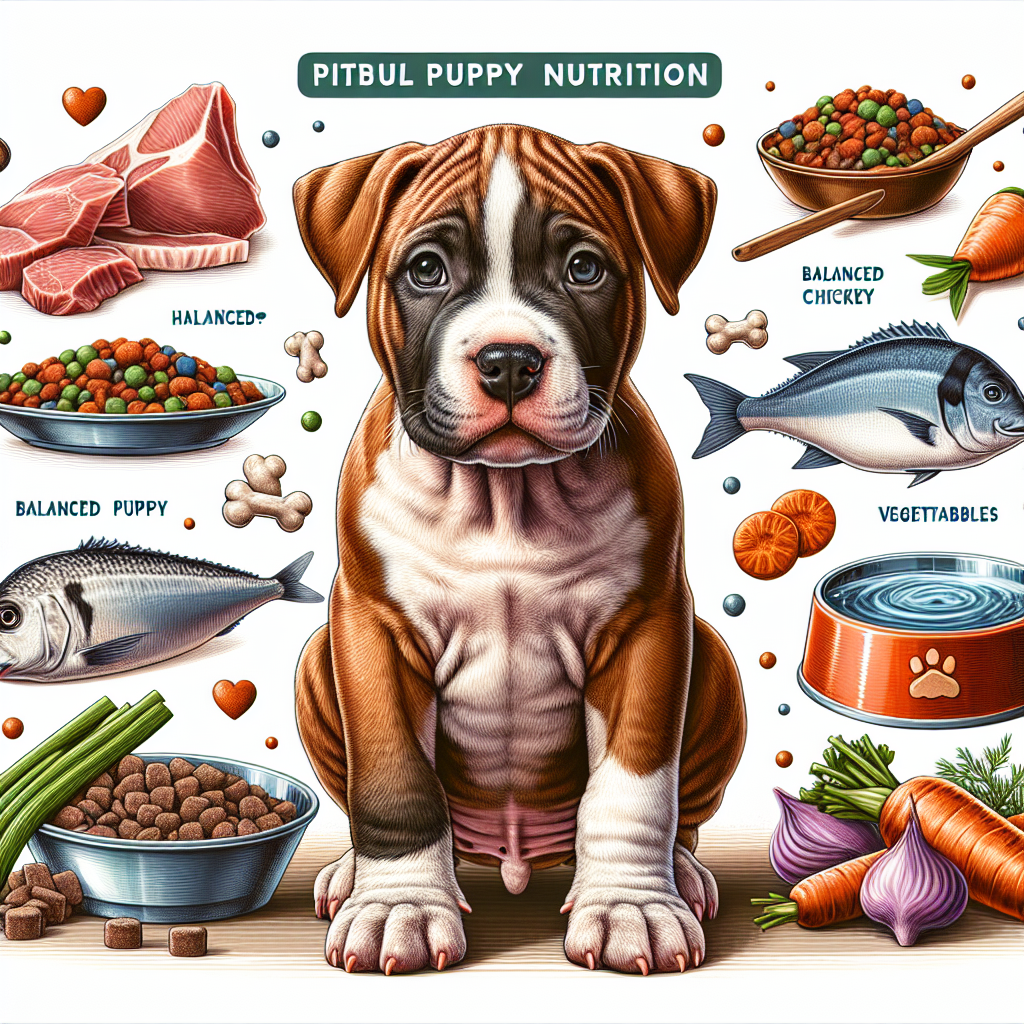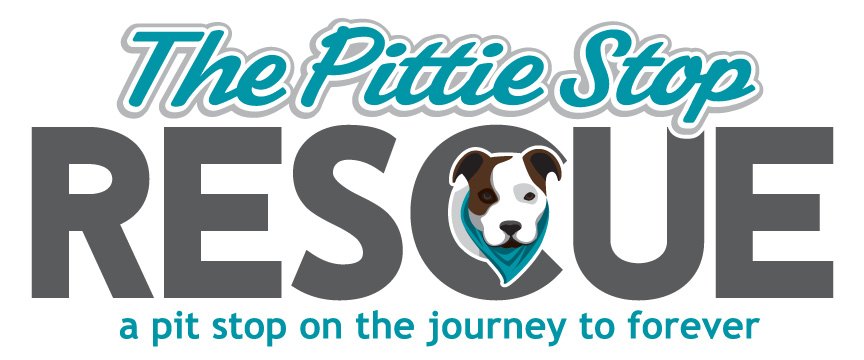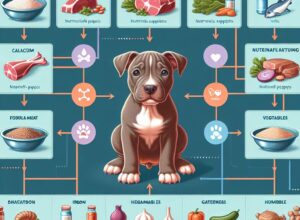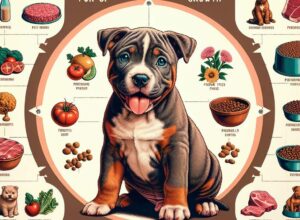
Key Takeaways:
- Learn the crucial role of nutrition in supporting your Pitbull puppy’s joint health.
- Identify the signs of hip dysplasia early to take proactive steps.
- Discover dietary strategies that can help prevent and manage hip dysplasia.
- Understand how specific nutrients contribute to strong bone and joint development.
- Know when it’s time to seek veterinary advice for your puppy’s hip health.
Nourishing Joints: Key Diet Strategies for Pitbull Puppies
When it comes to our Pitbull puppies, we all want them to grow up healthy, strong, and active. Their playful jumps and sprints all depend on one critical factor: their joint health. A proper diet is not just about filling their tummies; it’s about building their future, one meal at a time. Let’s talk about how you can nourish those growing joints with the right foods.
Your Puppy’s Health Starts with Their Bones
Think of your puppy’s bones as the foundation of a house. Just like a strong foundation keeps a house steady, strong bones keep your puppy active and healthy. But here’s the thing: bones need the right building blocks to become strong. That’s where calcium and phosphorus come in, two minerals that are like the cement and bricks for your puppy’s bones.
The Role of Nutrition in Joint Development
It’s not just about the bones though. The joints are where the magic of movement happens, and they need care too. Nutrition plays a star role here. Imagine your puppy’s diet as a team of nutrients working together to ensure smooth, pain-free movements. Omega-3 fatty acids, glucosamine, and chondroitin – these are the MVPs when it comes to joint care. They’re like the oil in an engine, making sure everything runs smoothly.
Identifying and Understanding Hip Dysplasia in a Pitbull Puppy
Hip dysplasia – it’s a term that can send shivers down any Pitbull parent’s spine. But what is it, really? It’s a condition where the hip joint doesn’t fit together perfectly, which can lead to arthritis or lameness. It’s not just an old dog’s problem; it can start in puppyhood. That’s why understanding it early is so crucial.
Recognizing the Signs in Your Pitbull Puppy
- Limping or a bunny-hopping gait when they run.
- Difficulty standing up or climbing stairs.
- Less enthusiasm for playtime or exercise.
- A noticeable difference in the size or movement of the hind legs.
- Reluctance to jump or engage in activities they used to enjoy.
If you notice any of these signs, it’s time to pay attention. These could be the early warnings of hip dysplasia. Catching it early means you can take steps to manage it and keep your puppy as comfortable as possible.
How Dysplasia Develops and the Importance of Early Action
Hip dysplasia doesn’t just appear out of nowhere. It’s a combination of genetics, diet, and how your puppy grows. If your puppy grows too fast or gains too much weight, it can put extra stress on those developing joints. That’s why controlling their diet and growth rate is so important – it’s like avoiding putting too much weight on a growing tree branch.
- Keep an eye on your puppy’s weight – extra pounds mean extra stress on the hips.
- Feed them a balanced diet – it’s all about the right nutrients in the right amounts.
- Watch for signs of discomfort – the earlier you spot them, the better.
Early action is your best friend when it comes to hip dysplasia. By keeping a close eye on your puppy’s growth and diet, you can help ensure their hips stay as healthy as possible.
Customizing Your Pitbull’s Diet for Hip Health
Just like a tailor customizes a suit to fit perfectly, you can tailor your Pitbull’s diet to support their hip health. This isn’t about a one-size-fits-all approach; it’s about finding the right balance of nutrients that cater to your puppy’s specific needs. By doing so, you’re setting them up for a lifetime of mobility and happiness.
Balanced Feeding: What to Include
A balanced diet is the cornerstone of good health. For your Pitbull puppy, this means a combination of proteins, fats, carbohydrates, vitamins, and minerals. High-quality protein helps build strong muscles to support the joints. Healthy fats, especially those rich in omega-3s, reduce inflammation. Complex carbohydrates provide energy without spiking blood sugar levels. And, of course, vitamins and minerals round out the diet to ensure overall well-being.
Specific Nutrients That Support Joint Health
- Omega-3 Fatty Acids: Think of these as the lubricant for your puppy’s joints, reducing inflammation and promoting healthy development.
- Glucosamine and Chondroitin: These are the repairmen, helping to rebuild cartilage and maintain joint fluidity.
- Antioxidants: Like a shield, antioxidants protect the body’s cells, including those in the joints, from damage.
- Vitamin E and Selenium: These work together to support immune health, which is crucial for managing inflammation.
- Calcium and Phosphorus: These are the building blocks of strong bones, which support healthy joints.
Incorporating these nutrients into your Pitbull’s diet can help ensure their joints have the support they need to develop properly and stay healthy.
Ingredients to Avoid in Your Pitbull’s Diet
Just as important as what to include is knowing what to leave out. Certain ingredients can exacerbate joint problems or contribute to unhealthy weight gain. Avoid excessive amounts of grains and fillers, which can lead to obesity. Steer clear of by-products and artificial additives, which can cause inflammation and other health issues. And watch out for foods high in oxalates, which can interfere with calcium absorption.
Prevention Through Nutrition: A Proactive Approach
Preventing hip dysplasia is about being proactive with your Pitbull’s nutrition. This means not waiting for problems to arise but taking steps right from the start to support their joint health. It’s about choosing the right foods, supplements, and feeding practices that promote a healthy growth rate and body condition.
Best Practices for Portion Control and Weight Management
Managing your Pitbull puppy’s portions is critical for preventing hip dysplasia. Overfeeding can lead to rapid growth and excess weight, both of which put undue stress on developing joints. Follow these best practices:
- Use a measuring cup to ensure you’re giving the correct amount of food.
- Stick to a feeding schedule to regulate your puppy’s digestion and energy levels.
- Monitor your puppy’s body condition regularly and adjust portions accordingly.
- Consult with your vet to determine the ideal weight for your puppy’s age and breed.
By controlling your Pitbull’s portions and managing their weight, you’re taking significant steps to reduce the risk of hip dysplasia. It’s a simple yet powerful way to keep your puppy healthy and happy.
Puppies to Adults: Adapting Diet Over Time
As your Pitbull grows from a playful puppy to a strong adult, their dietary needs change. It’s crucial to adapt their diet to support each stage of their life. Young pups need more calories and nutrients to fuel their rapid growth, while adults require a diet that maintains their health without promoting excessive weight gain. Gradually transition your Pitbull’s food according to their age, activity level, and health needs, ensuring they always have the right balance of nutrients.
Supplements and Additives: Boosting Your Pitbull’s Diet
While a balanced diet is the foundation, sometimes your Pitbull may need an extra boost. Supplements and additives can fill in any nutritional gaps and provide targeted support for joint health. However, it’s important to choose high-quality supplements and to use them judiciously. Over-supplementation can be just as harmful as deficiency, so always consult with your vet before adding anything new to your puppy’s diet.
The Power of Omega-3s: More Than Just a Trend
Omega-3 fatty acids have gained a lot of attention, and for good reason. These powerful nutrients, found in fish oil and flaxseed, can significantly impact your Pitbull’s joint health. They help reduce inflammation, which can alleviate pain associated with hip dysplasia. Omega-3s also promote healthy brain development, making them a vital component of your puppy’s diet from the start.
Glucosamine and Chondroitin: Are They Necessary?
Glucosamine and chondroitin are often hailed as joint health superheroes. They’re naturally found in cartilage and can help repair and maintain joint function. For Pitbulls prone to hip dysplasia, these supplements can be beneficial. They work best as a preventative measure or in the early stages of joint issues, so consider adding them to your puppy’s diet early on, with your vet’s guidance.
When to Consult Your Vet: Diet’s Role in Hip Dysplasia Treatment
While diet plays a significant role in managing hip dysplasia, it’s not a cure-all. There may come a time when you need to seek professional advice. If you notice any signs of joint discomfort or if your Pitbull is diagnosed with hip dysplasia, your vet can help you navigate the best dietary choices for treatment and pain management. They can also advise on appropriate exercises and lifestyle changes that complement your puppy’s diet.
Making Informed Choices with Professional Advice
When it comes to your Pitbull’s health, making informed choices is key. Your vet can provide personalized advice based on your puppy’s specific needs. They’ll consider factors like breed, weight, and existing health conditions to recommend the best diet plan. With their expertise, you can feel confident that you’re giving your Pitbull the best chance at a healthy, active life.
Monitoring Progress and Revisiting Dietary Plans
Keeping track of your Pitbull puppy’s growth and health is like being a coach for a young athlete. You want to ensure they’re developing at the right pace and making gains in strength and health. Regular check-ups with your vet, along with keeping a close eye on your puppy’s weight and behavior, are essential. If you notice any changes or if they’re not thriving as expected, it might be time to revisit their dietary plan. Adjustments to their diet or supplements can make a world of difference in their overall joint health and well-being.
Key Takeaways: Nurturing Your Pitbull with the Right Diet
- Strong bones and joints start with proper nutrition, so focus on a balanced diet rich in essential nutrients.
- Be proactive in recognizing signs of hip dysplasia and consult your vet early for the best outcomes.
- Customize your Pitbull’s diet to their specific needs, considering their growth stage and any health concerns.
- Regularly monitor your puppy’s development and be ready to make dietary adjustments as needed.
- Remember, a healthy diet is a key to a happy, active, and mobile life for your Pitbull puppy.
Frequently Asked Questions
What specific foods help prevent hip dysplasia in pitbull puppies?
To help prevent hip dysplasia, focus on foods that are rich in omega-3 fatty acids, glucosamine, and chondroitin. These can include fish like salmon and sardines, which are natural sources of omega-3s. For glucosamine and chondroitin, consider adding a high-quality supplement or look for dog foods that include these ingredients. Additionally, ensure your puppy’s diet has the right balance of calcium and phosphorus for strong bone development.
How can I tell if my pitbull puppy is at risk for hip dysplasia?
While any puppy can develop hip dysplasia, there are some signs you can look for that may indicate a higher risk. These include a family history of the condition, rapid growth, or excessive weight gain. If your Pitbull puppy shows signs of stiffness, difficulty in rising, or a reluctance to play or climb stairs, it’s a good idea to talk to your vet. Early intervention can make a significant difference in managing the condition.
Are there any exercises that can prevent hip dysplasia?
While no exercise can guarantee the prevention of hip dysplasia, certain activities can help strengthen the muscles around the joints, which can offer support. Swimming is a fantastic low-impact exercise that can be particularly beneficial. Avoid high-impact activities, especially with young puppies, as their joints are still developing. Always consult with your vet before starting any new exercise regimen with your Pitbull puppy.
Can a pitbull puppy outgrow hip dysplasia with the right diet?
It’s a common question whether a Pitbull puppy can outgrow hip dysplasia with the right diet. The truth is, while diet plays a crucial role in managing the symptoms and progression of hip dysplasia, it is not a condition that a puppy can simply outgrow. Hip dysplasia is a genetic and developmental issue; however, a tailored diet can help manage the condition and improve quality of life. Proper nutrition can support joint health, reduce inflammation, and help maintain an ideal body weight, which are all essential in managing hip dysplasia.
How important is the quality of dog food in preventing hip dysplasia?
The quality of your Pitbull puppy’s food cannot be overstated when it comes to preventing hip dysplasia. High-quality dog food provides the right balance of nutrients necessary for healthy bone and joint development. It avoids harmful additives and fillers that can contribute to obesity and inflammation. By choosing premium dog food, you’re investing in your puppy’s long-term health and reducing the risk of hip dysplasia and other joint-related issues.
In conclusion, the journey of nurturing a Pitbull puppy into a healthy adult dog is filled with love, care, and a bit of science. Understanding the importance of a balanced diet, recognizing the early signs of hip dysplasia, and knowing how to take proactive steps are all key to ensuring your furry friend’s well-being. Remember, the right diet does more than just fill their bellies—it supports their growth, protects their joints, and sets them up for a future full of tail-wagging adventures. By following the guidance provided, you can make informed decisions that contribute to a happy, healthy life for your beloved Pitbull.
Keep learning, stay observant, and always consult with your vet to tailor the best nutritional plan for your Pitbull’s needs. Here’s to the health and happiness of your four-legged companion!
Frequently Asked Questions
Can a pitbull puppy outgrow hip dysplasia with the right diet?
While a proper diet is critical for managing hip dysplasia, it is not a condition that a puppy can outgrow. The condition is due to a combination of genetics and development, but a good diet can help alleviate symptoms and prevent further joint damage.
How important is the quality of dog food in preventing hip dysplasia?
Quality dog food is extremely important in preventing hip dysplasia. It ensures that your puppy gets the necessary nutrients for healthy bone and joint development and reduces the risk of obesity, which can exacerbate hip dysplasia.
Are there any exercises that can prevent hip dysplasia?
While exercise alone cannot prevent hip dysplasia, it can help strengthen the muscles around the joints and maintain a healthy weight, both of which can support joint health. Low-impact exercises like swimming are beneficial, but always consult your vet before starting any exercise program.
How important is the quality of dog food in preventing hip dysplasia?
The quality of dog food is vital in supporting overall health and can contribute to preventing conditions like hip dysplasia by promoting healthy growth and maintaining an ideal weight.



